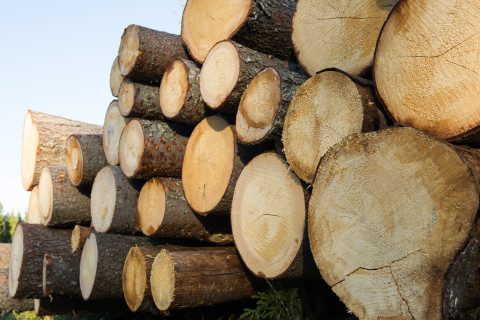The doctoral dissertation in the field of Forestry will be examined at the Faculty of Science, Joensuu Campus and online.
What is the topic of your doctoral research?
The main goal of the timber trade from the buyer’s perspective is typically to find and deliver the required raw materials to the different mill locations and at certain specific times. To do that, stands that are available for harvesting are considered within a predefined wood sourcing area and harvesting procedures are allocated to secure a continuous flow of feedstock for further processing. In order to perform this complex spatiotemporal optimization task, it is important to know about the timber assortments to be found in each stand within the given wood sourcing area, and especially the quality of the stems in each possible stand, before trading and harvesting. This knowledge can support timber trade as well as the planning and preparation of harvesting operations. It should also be borne in mind in this context that the planning and preparation of harvesting operations will affect the costs and will be further reflected in the commercial value of each stand. The aim of this thesis is to improve our understanding of this phenomenon and to provide methods for supporting digital timber trade.
What are the key findings or observations of your doctoral research?
In order to understand the complex wood procurement process and support the planning of harvesting operations, this thesis presents approaches designed to obtain detailed forest resource information from airborne laser scanning (ALS) data, aerial images, sample plots and a stem quality database. Information gathered with the methods developed here could reduce the need for field visits and therefore cut costs, as well as assisting in the performing of digital timber sales and improving the operational environment for digital timber marketplaces.
Moreover, approaches proposed in this thesis could also offer a means of enhancing the guidelines for the pre-harvest clearing of understorey vegetation. These approaches were based on the information that ALS can provide regarding the lower vegetation layers in forests and proved capable of generating new information to support the planning of forest harvesting operations.
This thesis provided an understanding of the locations, conditions and appraisal of harvestable timber stands, and may thus have contributed towards solving the current bottlenecks in the digital timber trade.
How can the results of your doctoral research be utilised in practice?
The results showed that use of the methods developed in this thesis could support wood procurement practices by (1) locating valuable stands with the desired timber assortment distributions, (2) identifying understorey vegetation that needs to be removed before harvesting, and (3) reducing costs, as the number of field visits needed before harvesting will diminish.
The present findings may make timber markets more competent, since the methods developed here provide detailed pre-harvest information that can be used as a decision support tool by either buyers or sellers of timber in traditional and digital marketplaces.
What are the key research methods and materials used in your doctoral research?
Methods developed in this thesis can be used for assessing forest stand conditions when finding suitable timber and planning harvesting operations. We estimated timber assortment volumes, economic values and wood paying capabilities (WPC) for plots or stands with different bucking scenarios, and used the resulting timber assortment estimates to assess logging recoveries. The alternative bucking scenarios investigated were (1) bucking-to-value using maximum sawlog and pulpwood volumes but excluding quality (theoretical maximum), and (2) bucking-to-value using sawlog lengths at 30 cm intervals for Scots pine (Pinus sylvestris L.) and Norway spruce (Picea abies (L.) H.Karst) and veneer logs of lengths 4.7 m, 5.0 m, 6.0 m and 6.7 m for birch (Betula spp.), either excluding or including wood quality indicators. The first approach resembled the state-of-the-art in Nordic forestry business circles and the second approach went beyond that.
The commercial value of timber stands is substantially affected by the quantity of understorey trees, and pre-harvest clearing is typically needed when forest stands have an understorey vegetation that hinders harvesting operations. We therefore proposed a method for estimating this need for the pre-harvest clearing of small trees (diameters at breast height < 7 cm).
The work for the thesis was carried out in three areas, two of which were located in Eastern Finland and one in Southern Finland. The field data comprised tree characteristics obtained from 79, 99 and 665 sample plots, 249 harvested stands and a stem quality database, whereas the remote sensing material consisted of aerial imagery and airborne laser scanning (ALS) data.



